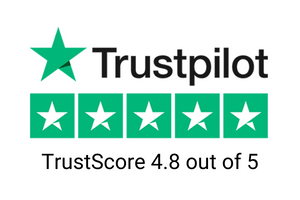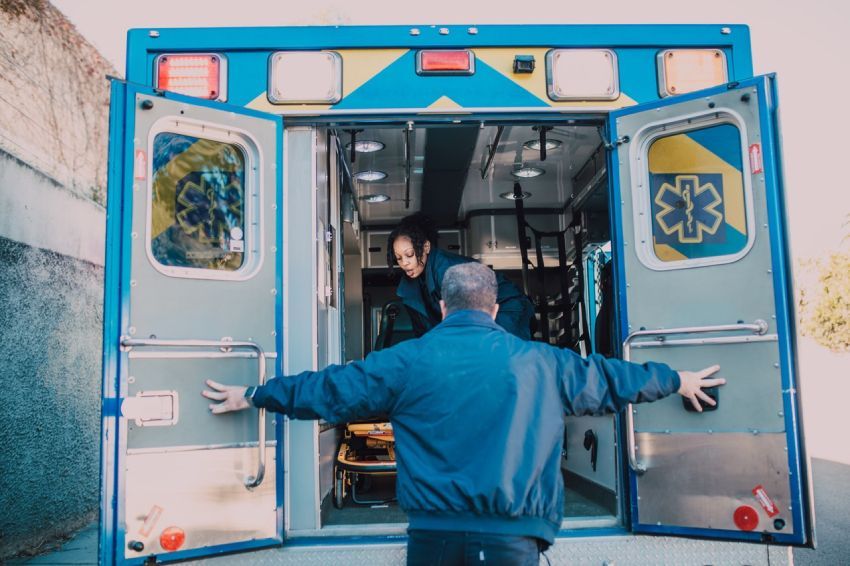Last Updated: March 25, 2025
Avoid Surprise Charges
Disclaimer: We are not qualified legal or tax professionals and are not giving advice. Always speak with a qualified professional before making any legal or financial decisions.
Medical emergencies often require swift ambulance transport, but the cost is rarely considered at the moment. It's only when the ambulance bill arrives that patients are shocked by its hefty price tag. In America, these expenses can lead to significant debt, as insurance coverage for ambulance services varies widely.
While the high costs charged by ambulance providers may seem puzzling, there are fortunately programs available to help manage these unexpected expenses. Let's explore why ambulance rides are so expensive and discuss options for handling surprise ambulance bills.
Want to skip the article and speak directly to a debt specialist? Click
here for a free consultation.
The History Of The Ambulance Service
The ambulance service has evolved significantly since its inception in 900 A.D. with horse-drawn litter. Modern ambulances emerged in 1887, with U.S. hospitals adopting them in 1865. The early 1900s saw motorized ambulances and aircraft joining emergency services. As the service developed, so did the complexity of the ambulance bill. Post-Korean War, ambulance companies focused on patient transport, while the Vietnam War era introduced the concept of Emergency Medical Technicians (EMTs) providing care.
Today's ambulance services are split between fire departments and private providers, chosen based on community needs. This evolution has improved emergency medical care, but the ambulance bill can sometimes cause unexpected financial strain for patients. The situation is often complicated when transport involves out-of-network hospitals, highlighting the ongoing challenges in emergency medical services.
The Average Ambulance Bill
Ambulance companies can be run by a private company, not-for-profit, or publicly owned. Regardless, the average price for patient transport is $1,200, although this can skyrocket based on the type of emergency.
Air transport runs between $20,000 and $45,000.
Health insurance may or may not pay, because the responding ambulance may be "out of network providers."
However, the rules are wildly irregular. Many people believe that ambulances are only for emergencies or immediate care, but this is not always the case.
If a private ambulance company responds, the patient is charged a flat fee, between $500 to $1,200 for ambulance transport to either the ED or non-emergency transports to another medical facility like dialysis, or a transfer from someplace like a nursing home to a hospital.
Distance matters as well. Medicare may cover long-distance ambulance transport if deemed medically necessary, while some insurance providers have more restrictive coverage policies.
The base price is set by Medicare, but that is not what every patient will pay.
Instead, the service charges much more to cover expenses, defaulted bills, and uninsured individuals. If you are living on a limited income, look into Medicaid insurance.
The bill is set out like this:
- Initial pick up $500- $1000
- Mileage $10-$13 per mile
- Medical intervention and supplies
- Other charges based on balance billing - anything not included in your health insurance coverage - that is now your responsibility
Who Pays For An Ambulance Ride?
The patient's insurance coverage will usually pay the ambulance bills once the deductible and/or co-payments are met from the patient's pocket.
This is usually a question for an insurance company, as they can give you more specific details on your current plan if the ambulance service is in network, and the expected financial contribution from patients.
If there is a hospital stay, patients may get billed separately for this event.
In many cases, ambulances will take uninsured or low-income patients or those who cannot afford their deductible and may send ambulance bills to the patient's hospital for reimbursement after care has been provided at a hospital ED/ER.
How Do You Negotiate An Ambulance Bill?
If a patient struggles to afford their medical transport costs, the first step is to contact their insurance company. Insurers may negotiate with the ambulance service to reduce charges or increase coverage. For uninsured patients or when insurance won't help, reaching out to the ambulance company directly can lead to payment plans or lump sum agreements.
To address potentially inflated ambulance bills, request an itemized statement and review it carefully. If negotiations with the ambulance company and your insurance provider do not yield results, consider seeking advice from consumer advocacy groups or legal aid organizations, resulting in a more reasonable payment amount.
How to Avoid Paying Ambulance Bills
It's important to note that while the aim should not be to avoid paying for services received, there are certain circumstances in which you may be able to legally and ethically avoid or significantly reduce your ambulance bill. Here are some strategies:
1. Insurance Coverage
Ensure you have a robust health insurance plan that includes coverage for ambulance services. Check with your insurance provider about the specifics of your plan, particularly if it covers out-of-network ambulance services. If your current plan doesn't cover these services, you might consider upgrading to a plan that does.
2. Negotiation
Negotiating the ambulance bill can significantly lower the amount you need to pay. If you're uninsured or your insurance doesn't cover the full amount, reach out to the ambulance company. They may agree to a lump sum payment or a payment plan that fits your budget. It's also beneficial to ask for an itemized bill to spot any inflated charges.
3. Financial Assistance Programs
If you meet the income eligibility criteria, you can apply for financial assistance programs. These programs can assist in paying for unpaid coinsurance, deductibles, and non-covered, medically necessary services. Government programs like Medicare and Medicaid, as well as certain charitable organizations, offer financial assistance that can help with ambulance bills.
4. Accident and Sickness Insurance
Companies offer additional insurance policies known as Accident and Sickness Insurance. This covers part of the out-of-pocket expenses like deductibles, which can include ambulance services. These policies are generally affordable and can be a viable strategy to avoid paying ambulance bills.
5. Local Government Services
In certain areas, local governments provide ambulance services free of charge to residents. Check with your city or county government to find out if such services are available in your area.
Please remember, these strategies are meant to help reduce the financial burden of ambulance bills, not to encourage evasion of rightful payments for services received. Always ensure you are taking ethical steps to manage your medical expenses.
Financial Assistance For Ambulance Bill
Luckily, there are a variety of organizations that offer a financial assistance program if you meet income eligibility criteria established by the federal government.
A financial assistance program can assist in paying for unpaid coinsurance, deductibles, and non-covered, medically necessary services. One of the most notable is the CARE program, part of Medicare and Medicaid.
You can ask your insurance provider if they have an emergency assistance program. If you don't have any insurance, you should call the hospital and ask them about their financial assistance plans.
One can also contact Good Samaritan providers to see if they're willing to provide help for an emergency.
Other entities that may offer financial help include places like churches or charities that are at your disposal when you find yourself in need of extra support.
Of course, patients can also set up a Go-Fund-Me and beg strangers for financial assistance.
There are several programs that may provide financial assistance:
- Medicaid covers ambulance transportation for eligible enrollees.
- Many hospitals have charity care programs that can cover ambulance bills.
- The Healthcare.gov guide lists more resources for assistance.
Surprise Billing
Surprise medical bills have been a staple of American medicine. A trip to the hospital can result in five or six bills from medical providers and the ambulance service. Some of the bills will be for services that are out of network.
As of January 1, 2022, there are new billing protections to stop surprise bills from out of network services located in in network facilities. As a result, excessive out-of-pocket costs are restricted
Protecting patients from a surprise medical bill is very important and will hopefully cause less financial hardship and need for financial assistance.
Preventing Surprise Ambulance Bills
It could include things like:
- Checking your insurance policy ahead of time to understand ambulance coverage
- Knowing your in network ambulance providers and using them when possible
- Asking EMTs to take you to an in-network hospital if possible
- Negotiating/asking for an estimate from the ambulance company before agreeing to transport
Tips To Save Money On Your Next Hospital Visit
Companies now offer an additional insurance policy known as Accident and Sickness Insurance. This covers part of the out-of-pocket expenses like deductibles on the catastrophic insurance that most Americans can afford to pay for.
This type of coverage generally costs between $20-$50 per month depending on what type of features you want in your policy. Another option is using your Flexible Spending Account, providing you have one and can afford to set aside pre-tax dollars for medical expenses.
Am I Legally Required to Pay?
In some cases, patients may not have consented to or requested the ambulance ride. It is important to check your state's laws regarding payment for services rendered without consent and consult with a legal professional if you believe this applies to your situation. However, refusing to pay can still affect your credit. Check your state laws and consult a legal aid clinic if you have concerns.
What Happens If You Don't Pay Your Ambulance Bill
Many people face difficult decisions when receiving unexpectedly high ambulance bills. Understanding the potential consequences of non-payment is crucial before deciding how to proceed.
The Collections Process
If you don't pay your ambulance bill, here's what typically happens:
- Initial Billing Period (0-30 days): You'll receive your first bill after insurance processing.
- Follow-up Notices (30-90 days): The ambulance company sends reminder notices, possibly with late fees added.
- Pre-Collections Warnings (90-120 days): You'll receive final notices warning of impending collections action.
- Collections Transfer (120+ days): The debt is typically transferred to a collections agency, which will contact you directly.
- Credit Reporting Impact (150+ days): The collections account is reported to credit bureaus, potentially lowering your credit score by 50-100 points.
Legal Consequences
Ambulance bills are legally enforceable debts. Potential legal actions include:
- Debt Collection Lawsuits: Ambulance companies or collection agencies can sue you for the unpaid amount plus court costs.
- Wage Garnishment: If they win a judgment, they may be able to garnish a portion of your wages until the debt is paid.
- Bank Account Levies: In some cases, they may be able to withdraw money directly from your bank account.
- Property Liens: In extreme cases, they could place a lien against your property.
Statute of Limitations
The statute of limitations for medical debt (including ambulance bills) varies by state:
- Most states: 3-6 years
- Some states: Up to 10 years
After this period expires, creditors cannot legally sue you for the debt, though it may still affect your credit score and you technically still owe the amount.
Impact on Your Credit Score
Unpaid ambulance bills that go to collections can:
- Remain on your credit report for up to 7 years
- Significantly impact your ability to qualify for loans, credit cards, rental applications, and even some jobs
- Result in higher interest rates on future borrowing
Important Note: Under recent changes to credit reporting rules, paid medical collections under $500 may be removed from your credit report, and the credit reporting grace period for medical debt has been extended to one year.
Special Considerations for Ambulance Bills
Ambulance bills have some unique aspects compared to other medical debt:
- They often come from providers separate from hospitals, leading to confusion
- Many ambulance services are out-of-network, even when the hospital is in-network
- Some states have specific consumer protection laws for ambulance billing
- The No Surprises Act (2022) provides some protections, but ground ambulance services are currently exempt
Better Alternatives to Non-Payment
Rather than simply not paying your ambulance bill, consider these options:
- Negotiate a settlement - Many providers will accept 40-60% of the original bill amount
- Request a payment plan - Most ambulance companies offer interest-free payment plans
- Apply for financial assistance - As detailed in other sections of this article
- Check if the bill was properly coded - Medical billing errors are common
- File an appeal with your insurance - If they denied coverage incorrectly
Remember that addressing the bill proactively almost always results in better outcomes than ignoring it.
FAQs
Conclusion
You can get help paying for your ambulance bill in a variety of ways. It's important to understand your insurance coverage and explore any available financial aid programs in advance to better manage potential costs.
Some other options include charitable organizations and government grants which will provide some form of payment assistance. If all else fails, you can always ask friends and family members who might have more cash on hand than they're currently using these days.
Consider reaching out to friends and family for financial assistance if you are facing difficulties in paying your medical bills. Open communication about your situation can sometimes lead to helpful support.
If your medical bills are unpayable, you may be a candidate for Pacific Debt's debt settlement program.
Contact us today to see how we can help you!
*Disclaimer: Pacific Debt Relief explicitly states that it is not a credit repair organization, and its program does not aim to improve individuals' credit scores. The information provided here is intended solely for educational purposes, aiding consumers in making informed decisions regarding credit and debt matters. The content does not constitute legal or financial advice. Pacific Debt Relief strongly advises individuals to seek the counsel of qualified professionals before undertaking any legal or financial actions.
Reduce Your Credit Card Debt By Up to Half

BBB Reviews | 4.9/5.0 Rating










 Do Not Sell My Personal Information
Do Not Sell My Personal Information